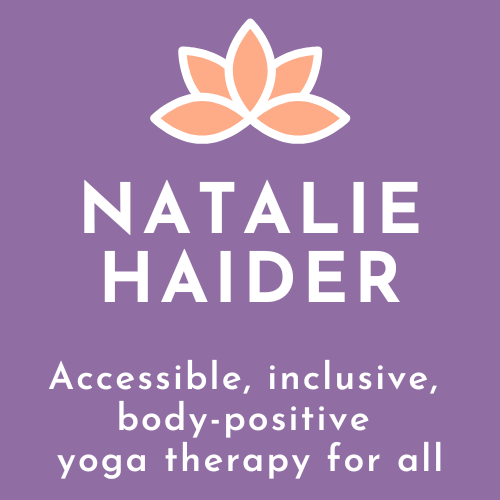What can accessible yoga do for me?
Yoga is an incredible system of tools with healing potential, and yet many people feel excluded by the westernised messaging of yoga as an intense physical workout.
As humans, we have a fundamental need to be included and feel like we belong. Our brains constantly scan our surroundings to work out whether we “fit in”. When we feel excluded, this activates our sympathetic nervous system response – fight, flight, freeze, or fawn.
My mission is to make all people feel included by delivering accessible yoga practices. This looks different depending on who I’m working with. One of my yoga therapy clients lost his vision and sense of smell following an MVA and, understandably, experienced a huge sense of loss. Our yoga therapy sessions have included meditations to welcome and accept emotions, breathing practices to move into parasympathetic dominance (rest, repair, relax), and movement to reconnect to his body.
Interestingly, the client has said that the most empowering and helpful practice has been guided walking to increase awareness of other senses. Tuning into sounds has started to create safety and connection - listening for the direction of a moving car, noticing familiar sounds like the entry door to his rehab facility, and starting to differentiate between staff voices. Observing sensations has created context and sparked the client’s ability to visualise what can no longer be ‘seen’ - feeling the breeze or sun when outdoors; the texture, temperature, and weight of food; and different surfaces underfoot have helped orient the client to his location.
I’ve also been encouraging my client to harness senses he wasn’t aware of. The 6th sense, proprioception, is the ability to sense where the body is in space. By tuning into subtle shifts in walkway gradients and patterns of activation in muscles, my client can now sense whether he is walking uphill, downhill, or away from a designated path. The 7th sense, interoception, is the ability to sense internal cues. My client can now notice when his breathing becomes short and shallow, and has simple strategies to slow his breath down; he is also able to tune into tension and tightness in his body and release through gentle movements.
If you believe Instagram images, this in no way looks like ‘yoga’! And this is exactly the type of teacher and therapist I love being - accessible, collaborative, and empowering.
